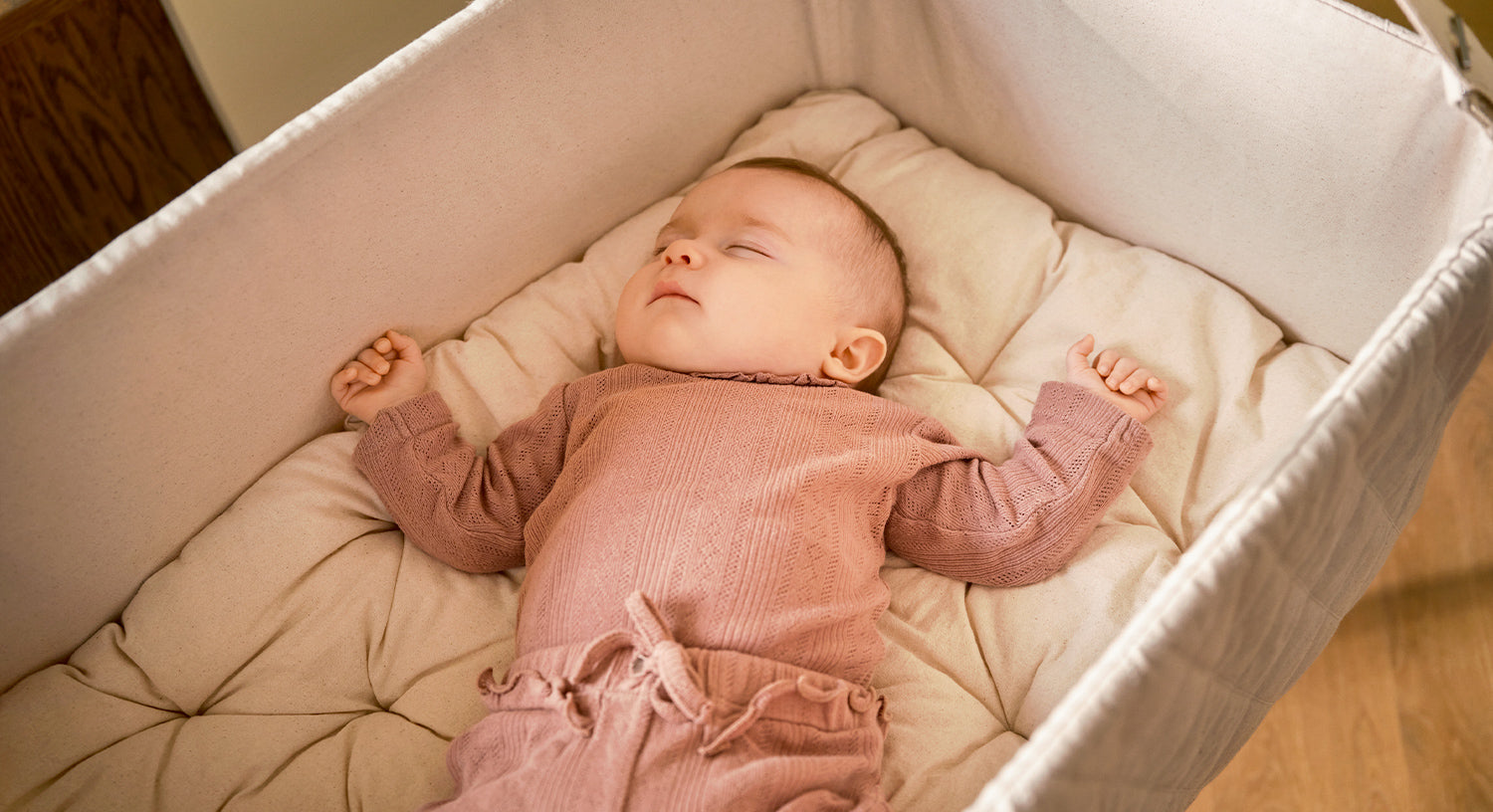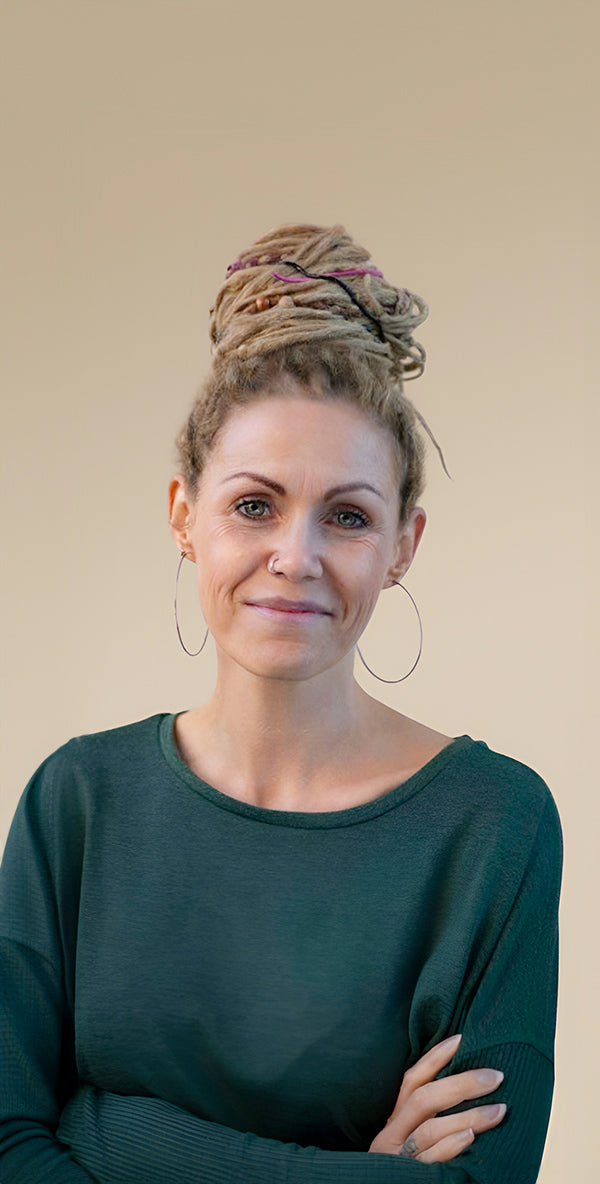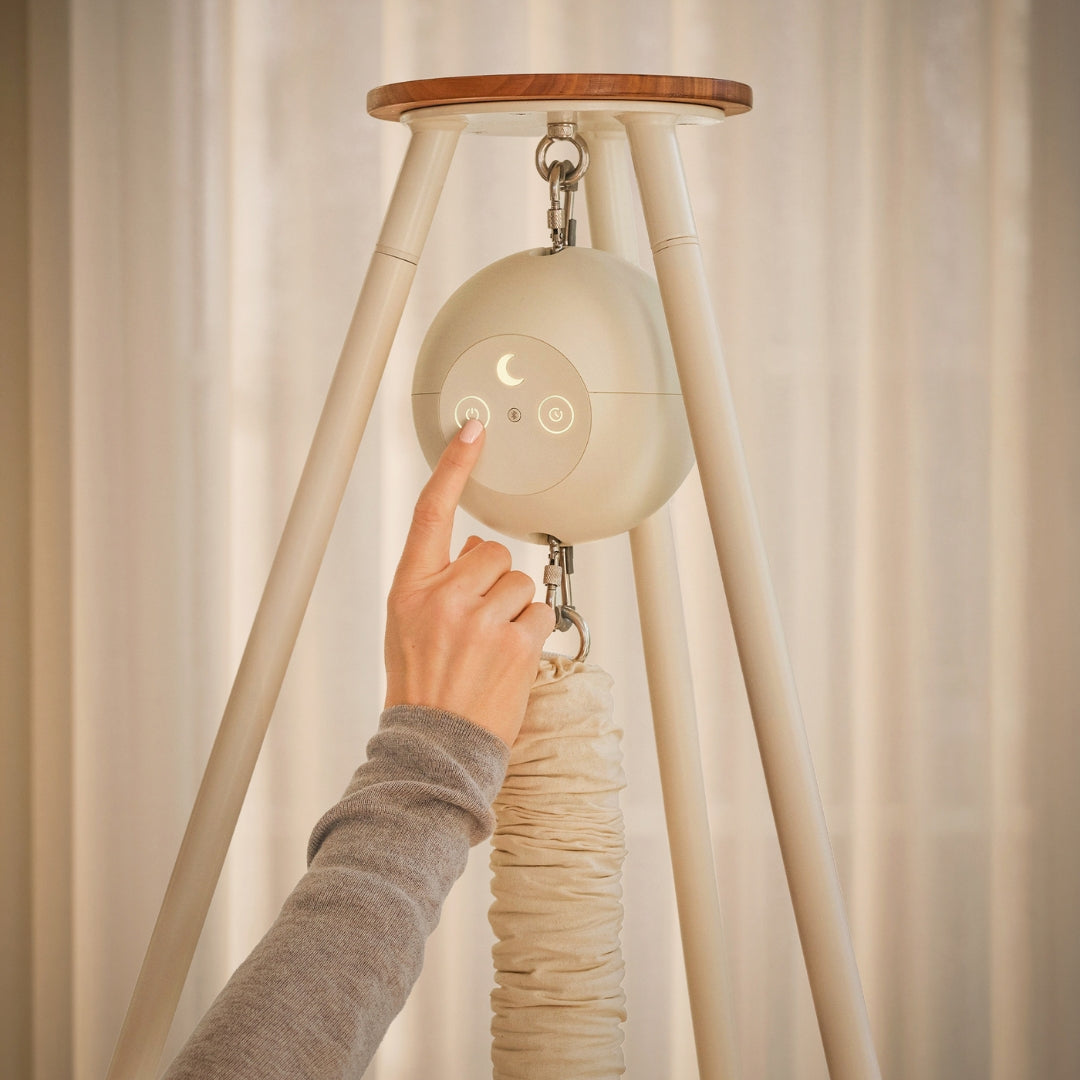


When your baby resists sleep, only drifts off while breastfeeding, or experiences restless nights, it’s natural as a parent to wonder if their sleep patterns are normal or if you're doing something wrong. The uncertainty can be overwhelming, leaving you searching for answers and reassurance.
But what exactly defines normal baby sleep? How much rest does your little one truly need? When will they learn to fall asleep on their own? And when do they enter the deep sleep phase that experts emphasize as crucial for development?
Understanding infant sleep can help ease your worries and provide insight into what to expect as your baby grows.
Below, we’ll share some insights on what years of experience and research have taught us about normal baby sleep—things to keep in mind when you're on your sixth cup of coffee, wondering if you’ll ever sleep again.

When is your baby in the deep sleep phase?
Understanding the different stages of sleep can be really helpful for many parents.
Let’s start with a little look at your baby’s sleep biology, which might offer some relief. A baby’s sleep cycle typically lasts around 40-55 minutes, which is shorter than the adult sleep cycle. But during this brief time, your baby moves through all the stages of sleep they need for development, including deep sleep.
It's important to keep in mind that every child is different. Some babies may complete a full sleep cycle in just 30-35 minutes, and that’s perfectly normal!
Sleep Biology Fact Sheet
While the stages of sleep are the same for everyone, the way they're structured (sleep architecture) differs based on age. Here’s a simple breakdown:
- NREM1 (Very Light Sleep): You’re not fully asleep yet and may still be aware of your surroundings. As an adult, this is when you might sip water, go to the bathroom, or adjust your covers. It’s also called “light waking” when it happens at night.
- NREM2 (Light Sleep): You’re asleep, but any small disturbance can easily wake you up.
- NREM3 (Deep Sleep): At this stage, waking up is unpleasant.
- NREM4 (Very Deep Sleep): It’s hard to wake someone in this phase, and it feels uncomfortable if you do.
- REM (Dream Sleep): You can be easily awakened, and this is when dreaming happens.
Most people can tell when a child is in deep sleep (NREM3/4). They lie still, their breathing is slow and heavy, and they don’t react much to being touched or moved. In contrast, during lighter sleep (NREM1/2 and REM), the child’s breathing is faster, and they may be more "active," moving around and sometimes giving the impression they are waking up or having a restless night.
Newborn sleep cycles
A newborn's sleep cycle lasts about 40-50 minutes and follows this pattern:
- The baby falls directly into the REM sleep phase.
- The baby moves into NREM3 and NREM4 (deep sleep).
- The baby returns to the REM sleep phase.
This completes the sleep cycle, and the process can begin again.
Changes from 2-6 months
As your baby grows, their sleep cycle changes. Around 2-6 months, new phases—NREM1 and NREM2—are introduced, making their sleep patterns slightly more complex. At this stage, many parents notice that their baby’s sleep becomes more challenging, and they may require more help falling asleep.
The reason for this is simple: your baby is now experiencing the lighter sleep phases (NREM1 and NREM2), which they haven’t had before. For some babies, it may feel like they’re resisting sleep, but it’s actually that they just aren’t able to settle down by themselves yet.
The sleep cycle for a baby aged 2-6 months remains around 40-50 minutes and typically follows this pattern:
- The baby starts in NREM1 and transitions into NREM2, provided they’re not disturbed and receive the necessary sleep support.
- The baby then moves into NREM3 and NREM4 (deep sleep).
- The baby returns to NREM2 and NREM1.
- The baby enters REM sleep.
- The baby ends the cycle in NREM1.
At this point, the cycle is complete, and the process can begin again.
REM and deep sleep
The younger the baby, the more time they spend in REM and deep NREM sleep. For example, a newborn spends about 50% of their sleep in REM sleep, which is often referred to as “deep sleep.” This is when the body and mind rest and recharge, supporting growth and development. So, if your baby wakes between sleep cycles, remember that this is perfectly normal. Both newborns and older babies spend plenty of time in deep sleep, which is reassuring for parents worried about sleep interruptions.
How much sleep does your baby need?
The short—and perhaps unexciting—answer is that it varies from child to child.
Decades of research have shown that there is a significant difference in when, how long, and how well children sleep. These differences depend on the individual child, their family’s routine, and even the society in which they live.
You might have come across charts that suggest how much sleep your baby should get based on their age. Some of these charts even specify when your baby should sleep and for how long. While these charts are meant to guide parents, what should you do if your baby’s sleep doesn’t quite match what’s listed?
It’s important to remember that all children are different. Some babies need less sleep, while others need more. For instance, a 9-10-month-old might thrive on just nine hours of sleep (with awakenings, of course) and a single one-hour nap, while another child of the same age might sleep 10-11 hours each night (with awakenings) and take two naps, each lasting about two hours. It varies widely.
Trying to get a baby to sleep who doesn’t need more rest is not only stressful, but it can also create a negative association with sleep and bedtime. Think about your own sleep habits—if you don’t feel tired at 8 PM, you won’t fall asleep just because someone else is ready to sleep, right?
The research behind sleep charts is based on statistical averages, showing how “most” children sleep, not what your specific baby needs. That’s why we encourage you to focus on your baby’s individual sleep patterns and needs rather than relying on general guidelines from a chart.
A very general guideline for 24 hours of sleep
Based on research and Sovende Børns' experience:
- Newborns (0-3 months): Approximately 14-17 hours of sleep. Naps and nighttime sleep are completely individual.
- Babies (4-11 months): Approximately 12-15 hours of sleep. The child takes 1-4 naps and gets a regular night's sleep, often with awakenings every one to two hours between 10 p.m. and 5 a.m.
- Toddlers (1-2 years): Approximately 11-14 hours of sleep. The child transitions from two naps to one nap and gets a regular night's sleep. Many children at this age experience 1-3 awakenings, while some may continue to wake every one to two hours between 10 p.m. and 6 a.m.
- Older Children (3-5 years): Approximately 10-13 hours of sleep. Some children may sleep until noon at the beginning of their fourth year, but most outgrow this habit by age four. The child typically enjoys a regular night's sleep, although some children may still have one or several awakenings on some or all nights.
Please note that there will always be children who sleep more or less than the ranges above, and this can be perfectly normal and healthy for that child.
If you would like the above information in a table format, you can find it here.
When will your baby be able to fall asleep on their own?
Many parents wonder when their baby will be able to fall asleep independently. The truth is, there's no one-size-fits-all answer, and it often depends on how you define "falling asleep on their own." This milestone could happen anywhere between birth and 4-5 years of age.
If you're referring to your baby no longer needing to be rocked, swaddled, or held to fall asleep, and instead just lying in bed, perhaps holding hands at bedtime, it could happen as early as 6-12 months. However, for many babies, it’s more realistic to expect this around 2 years old.
On the other hand, if you’re wondering about putting your baby to bed, saying goodnight, and leaving the room, some newborns may be fine with this. But for most, it takes time. A more realistic expectation is that this will gradually happen around 3 or 4 years old.
While this might not be the quick answer you were hoping for, it’s important to have realistic expectations. This way, you won’t stress about your child’s sleep habits or feel discouraged about your own bedtime routine skills.
When will your baby be able to sleep through the night?
The question of when your baby will sleep through the night is one that many parents ask. In simple terms, “sleeping through the night” usually means that a baby can sleep for several hours without needing assistance, whether it’s for feeding, comfort, or reassurance.
Though again, every baby is different, and their sleep patterns are influenced by a variety of factors, including age, temperament, and physical development.
Some babies, from the very beginning, sleep for longer stretches during the night, while others may have frequent awakenings that require help from parents. This can last well into their toddler years.
For many babies, the first few months are a mix of shorter sleep cycles, often needing nighttime feedings or comforting. Around 3 to 4 months, you might notice your baby starting to sleep for longer periods, but it's still not uncommon for them to wake up at least once or twice during the night.
By the time your baby reaches 12 months, they may begin to sleep for more extended periods, sometimes stretching five to six hours or even longer. Between 12 months and 2.5-3 years of age is when most children develop the ability to sleep through the night without needing to be soothed or fed. However, some children may take longer or may still experience occasional wake-ups, even into their toddler years.
The definition of “sleeping through the night” can vary. While health guidelines may refer to a minimum of five hours of uninterrupted sleep as “sleeping through the night,” many parents expect their little one to sleep at least eight hours, as adults do. Keep in mind that this expectation can lead to frustration or stress if your baby is not quite there yet.
Ultimately, it’s important to remember that all babies develop at their own pace, and sleep patterns can shift due to growth spurts, teething, or changes in routine. Patience and consistency are key, and it’s perfectly normal for your baby to take their time getting to the point of sleeping through the night.
Is it okay if my baby falls asleep while breastfeeding or bottle feeding?
It’s completely normal for your baby to fall asleep during breastfeeding or bottle-feeding. Research shows that sucking and drinking milk—whether from the breast or a bottle—can help calm the baby, as hormones are released in their stomach during feedings. Breast milk even contains sleep-inducing hormones that contribute to this relaxed state.
Additionally, the closeness and comfort of being held, especially if skin-to-skin contact is involved, can further soothe your baby and help them drift off to sleep.
So, if your baby falls asleep while feeding, there's no need to worry—this is a natural and comforting response, both for the baby and the parent.
Note: In some cases, newborns or babies may need to be gently awakened to ensure they are getting enough milk. If this applies to your baby, your healthcare provider or lactation consultant can offer guidance.

The fear of not doing "the right thing"
It’s common for parents to start questioning themselves if their baby isn’t sleeping "as expected" or if they wake up at night when other children in the local mothers' group seem to sleep through. The idea that something you are doing may be causing your baby’s sleep struggles can be unsettling, leading to questions like, “Is it the wrong bed, pacifier, food, or bedtime routine?”
You might even wonder if something is wrong with your baby because their sleep doesn’t align with what other parents or experts consider "normal" or typical.
But here's the thing: Don't worry! It’s time to let go of any negative thoughts about "bad habits" or fear-based assumptions. There is no research suggesting that your baby will be unable to sleep in a regular bed just because they spent their first few months in a swaddle wrap or baby hammock. Each baby is different, and their sleep journey is unique to them. So, trust that you're doing just fine!
Can you teach a baby how to sleep?
In short, you don’t need to "teach" your baby how to sleep because babies are born with the innate ability to sleep. From the moment they are in the womb, they spend most of their time sleeping. The rhythmic rocking motion of the uterus provided the perfect environment for them to rest peacefully. The baby wasn’t worried about being hungry, and the sounds of the mother’s heartbeat, digestion, and the background noise of daily life helped create a calming atmosphere, which encouraged sleep.
The truth is, your baby already knows how to sleep. However, as a parent, you can create conditions that support and encourage restful sleep. By providing an environment that mimics the soothing experience of the womb, you can help your baby feel comfortable and secure as they drift off.
For example, using a baby hammock can be a great way to recreate that gentle rocking motion. It helps provide a safe, calming environment that mirrors the peaceful conditions of the womb, making it easier for your little one to relax and sleep soundly. While you don’t need to "teach" your baby how to sleep, you can certainly offer them the comfort and security they need to sleep well.

Create good conditions for sleep by accommodating your baby's needs instead of working against them
Most parents manage just fine by experimenting, listening, and observing in their efforts to figure out what their baby needs and likes.
For example, consider how you can replicate natural ways of soothing a child to promote sleep.
Here are some ideas:
- Rocking the baby
- Singing, talking soothingly, or gently "shushing" if the baby is upset
- Offering calm eye contact and cozy chatting to help the baby feel secure and engaged with you
- Offering breastfeeding or a bottle
- Providing body contact through hugging, cuddling, holding, or kissing
- Taking the baby to a quiet place, possibly outside, to shield them (and yourself) from distractions and create a peaceful atmosphere
These practices are part of emotional regulation or co-regulation, which means the adult "transmits" their calm to the baby through these soothing actions. These are instinctive behaviors that most parents naturally do when their child is restless.
A calm nervous system is key to sleep
Babies are not yet able to soothe themselves or regulate their nervous system. Their brains simply haven’t developed that capacity. Babies and toddlers rely entirely on parental support to find the peace and calm they need to sleep. This is a matter of brain chemistry: when stress hormones are present, they block the production of sleep and calming hormones.
In a sense, normal baby sleep is "shared sleep," where parents play a vital role. This could mean physically being near the child or being available whenever the baby signals a need for help.
Sleep, when supported by parents, helps babies form the brain connections necessary for them to eventually fall asleep on their own without assistance. Over time, this builds the foundation for the child to maintain a calm nervous system, even when they’re alone at bedtime or wake up in the middle of the night.
Every time you help your baby calm down and fall asleep, whether it requires a little or a lot of assistance, you’re offering your own calm nervous system as support. This supports your baby’s emotional development and helps them learn this skill at their own pace.
Summary
- Babies and children often need a lot of help to fall asleep in their first 2-5 years of life. Often, they need much more help than parents are prepared for.
- Awakenings with the need for help to calm down again usually occur right up to school age.
- Babies' and children's sleep needs are individual and can vary greatly – just like adults.
- Most parents are very supportive of their child's sleep and show it by listening, observing, and following their intuition.
- Fearing that you as a parent are doing something wrong, that you are creating bad habits, or that there is something wrong with your child, is completely normal. However, it is important to remember that this fear is only relevant in rare cases. If in doubt, you should always contact your health care provider or lactation counsellor.
- Parental help with falling asleep forms the basis for future "independent sleeping".





































